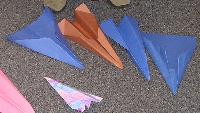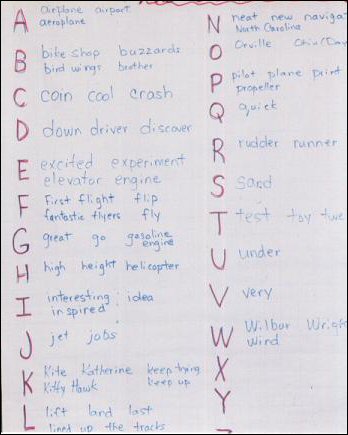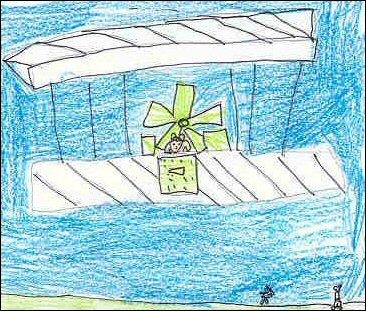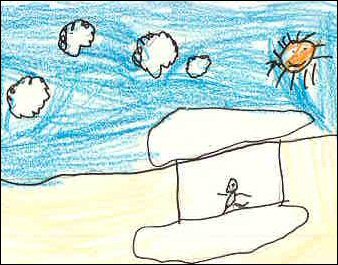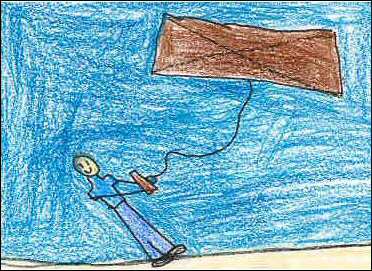| We read
several good books about the Wright brothers. The favorites were: First Flight, The Story of the Wright Brothers by Caryn Jenner The Wright Brothers by Pamela Duncan Edwards My Brother's Flying Machine , Wilbur, Orville and Me by Jane Yolen We also enjoyed two terrific videos: A highlight of this study was a visit made to our classroom by two airplane pilots. Jennifer Johnson flies for a passenger airline and Roy Johnson flies cargo planes. They brought some interesting maps, an altimeter, a special slide rule all pilots carry with them (even in this age of computers), model planes, and money from different countries. Of course we made paper airplanes! We flew the planes (traditional darts) in our hallway. Each of us had three turns and we counted floor blocks quickly to see how far the planes flew. We plan to repeat this in December and log distances more accurately with standard measures. We'll be able to use our data to make graphs and write questions about the graphs.
Our contributions to the project: Wright Brothers ABC CyberDictionary Wright Brothers Readers Theater Script- Please print and use) Our written responses are in the form of an ABC book or dictionary. ~ How We Made the CyberDictionary ~
First we made a whole-class list of words for each alphabet letter. These words related to the Wright brothers story and discussion we had during our study. Next, students randomly selected the letters they would be using to tell and illustrate a part of the story. The best part of a collaborative classroom project is the sharing of ideas that takes place.
These words are used in our students' writing to tell the Wright brothers' story. Here are a few writing samples. The entire CyberDictionary can be viewed at our class webpage. A is for AIRPLANE
Image by Chelsea K is for KATHERINE
Image by Lia S is for SANDY
Image by Conor W is for WILBUR
Image by Tiffany Finally, students will be writing comments about the project. We'd love to hear from other classes. Just send us an email. Our
project is aligned with the following standards: Language and Literacy Science 5.3 All students will integrate mathematics as a tool for problem-solving in science, and as a means of expressing and/or modeling scientific theories. 5.7 All students will gain an understanding of natural laws as they apply to motion, forces, and energy transformations. National Educational Technology Standards for Students. (NETS) Use technology communications tools: Students use telecommunications to collaborate, publish, interact with peers, experts, and other audiences. |
||||
